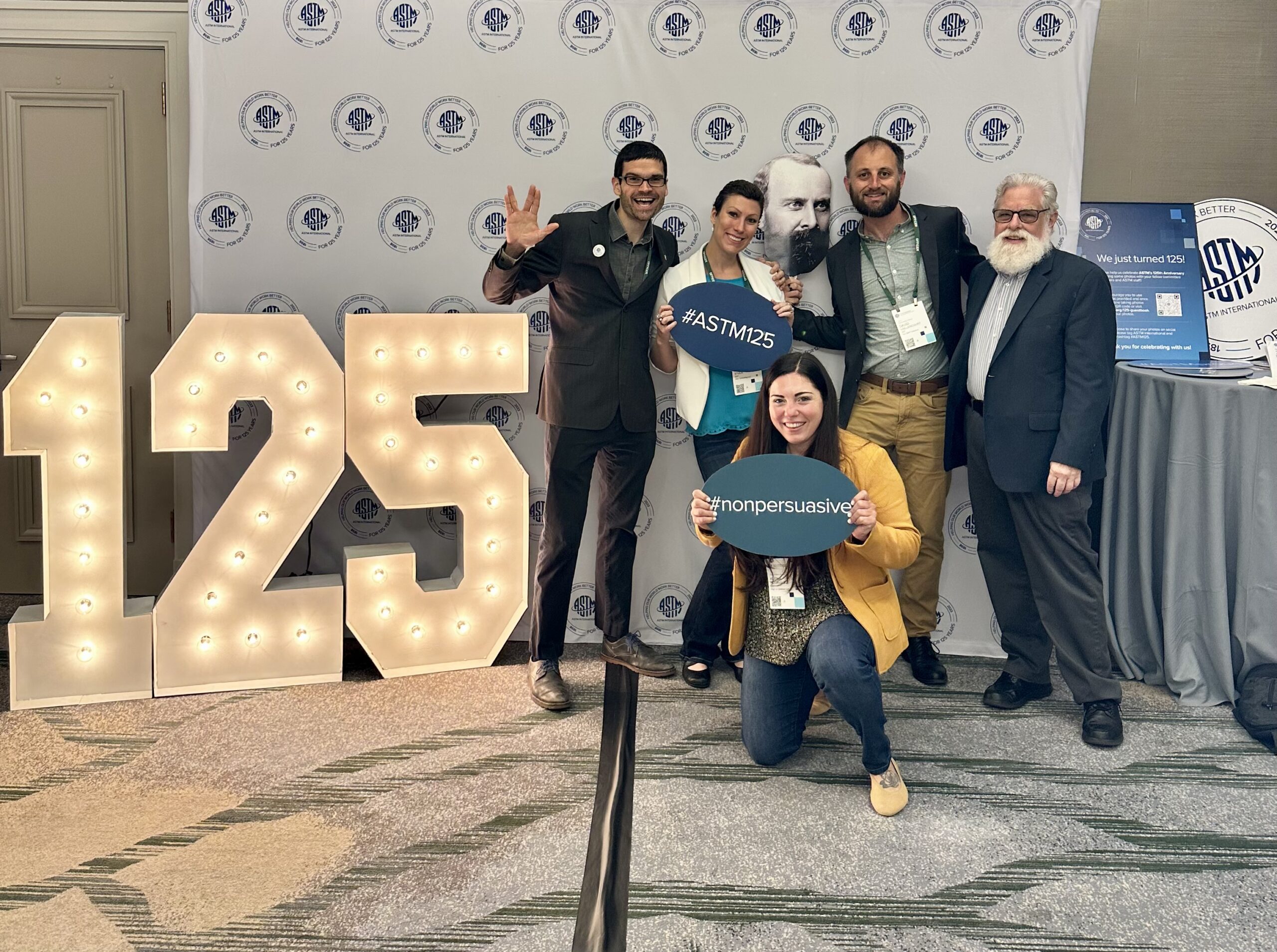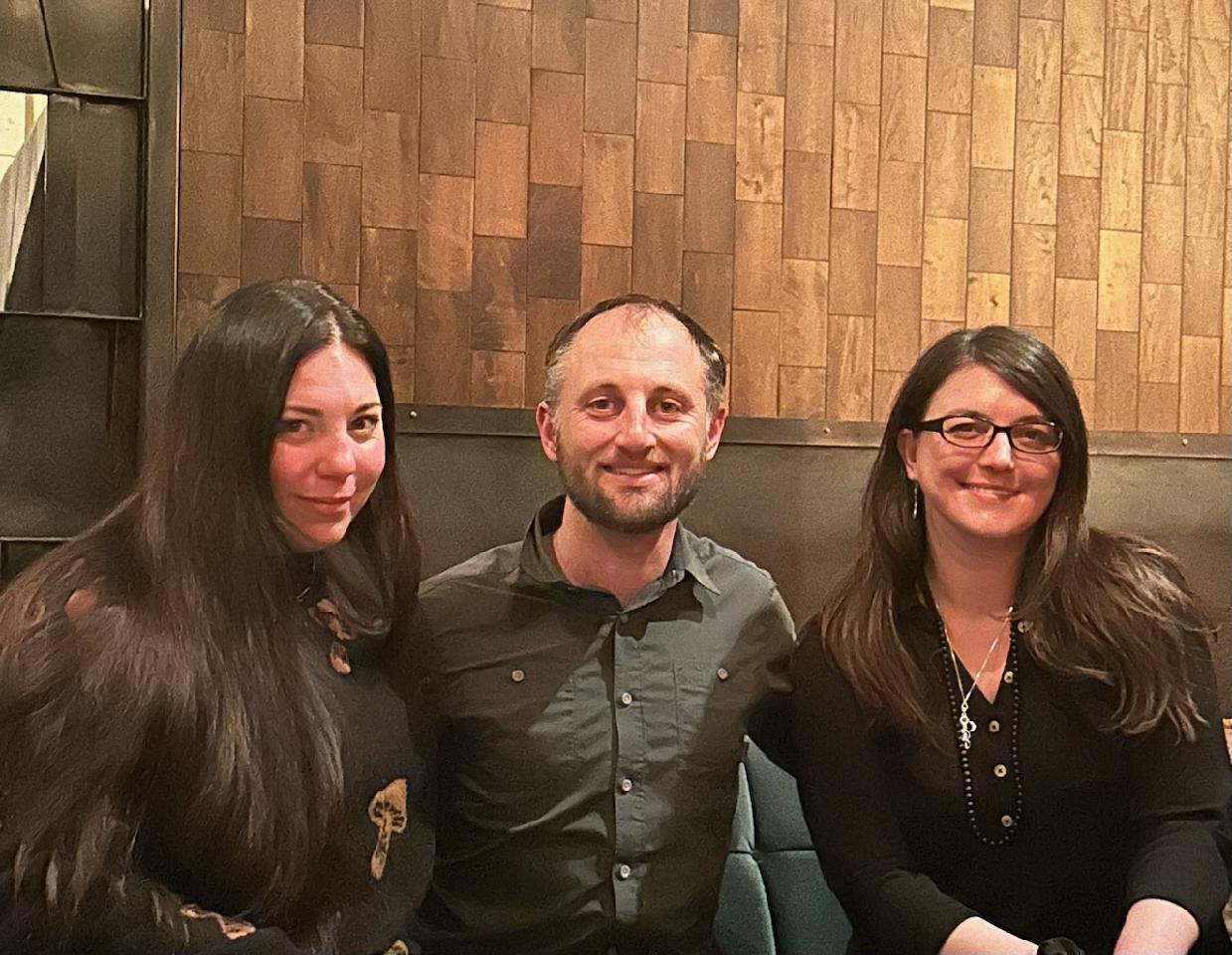In mid-January, against the backdrop of Kentucky’s renowned reputation for fast horses and whiskey, dozens of experts, advocates, operators, and regulators dove headfirst into the heartbeat of innovation and regulation at the ASTM Committee Week. It was my very first time attending, and I waded right into the deep end of the pool.
For those unfamiliar, ASTM International (formerly known as American Society for Testing and Materials) was originally established in 1898 and is one of three major standards development organizations (along with ANSI and ISO) and has been developing and publishing voluntary consensus technical standards in just about every category of materials, products, systems, and services you can think of. One of the oldest ASTM standards literally keeps the trains running on time – a standard for guiding steel rails. And as of just a few years ago in 2017, cannabis, the new kid on the block, joined the party.
I was also a new kid at the ASTM Committee Week conference, however the ASTM International organization provided training in advance with plenty of resources to understand the process, including online training, videos, and a warm welcome at the new member orientation meeting.

At first, the concept of developing standards through consensus seemed daunting, but soon was all demystified as the knowledgeable and helpful ASTM staff members explained the process with full transparency. Much like getting a bill passed on Capitol Hill, it can be a long process that includes debate, clarification, negotiation, and revision before finally becoming a published standard.
Instead of this process being ushered along by elected members of Congress, ASTM Committee members are volunteers from various stakeholder parties including major universities, state and federal government agencies, and public health organizations, as well as for-profit companies including multi-state operators and testing labs.
The atmosphere was charged with the collective determination to shape the future of the cannabis and hemp industries. While the legality remains an intricate puzzle in the United States, the global committee has members from over 30 countries, and the strides made during this event are monumental steps towards international standards that will chart the course for a thriving and harmonized industry.
Alena Rodriguez, co-founder of the non-profit S3 Collective, has been immersed in the world of ASTM standards for several years. Rodriguez states, “As an active member and the Chair of the Laboratory Subcommittee of ASTM’s D37 Committee on Cannabis, I am driven by the belief that standards are foundational to improving the world. Engaging in the development of global consensus standards for the cannabis and hemp industry offers an unparalleled chance for stakeholders like myself to ensure our voices are heard. I believe D37 is the most accessible standards development organization and provides individuals with a significant opportunity to influence our industry’s future. By sitting together at the table with industry operators, ancillary operators, scientists, consumers, and regulators from nearly 40 countries, we are collaboratively establishing the minimum practices necessary for safety and quality assurance. Our goal is for ASTM D37 standards to be referenced or adopted in regulations worldwide. Considering there are already over 6,000 references to ASTM standards within the U.S. Code of Federal Regulations alone for other industries, it seems within reach. Developing standards is ultimately about safeguarding our communities while ensuring the integrity of our marketplace, and I am proud to contribute to this vital effort.”
At the heart of this endeavor lies a profound understanding – the work we’re doing today isn’t just about compliance or even best practices; it’s about crafting the language of future legalization and regulation that can stand the test of time and can often streamline complex industry issues while creating a safer marketplace. Take, for instance, the International Intoxicating Cannabinoid Product Symbol (IICPS), identifying consumer products that contain intoxicating cannabinoids. In the past, each state conjured its own symbol, leading to a chaotic landscape for consumers and operators alike. The ASTM Committee, however, is rewriting this narrative. It instills order, creating a universal symbol that transcends state boundaries and eases the burden on operators adjusting to non-standardized symbols.
Darwin Millard, also known as the Spock of Cannabis, is another active member of the ASTM D37 Committee and is the chair of D37.08 (Personal/Household-Use Cannabis Devices and Appliances) and co-chair of D37.04 (Processing and Handling). ”ASTM International’s technical committee D37 on Cannabis is one of the only true unbiased forums where stakeholders of all types from around the world can participate in shaping the marketplace in which they partake. Through an established 125-year-old accredited process, the volunteer members of ASTM D37 work to create technically accurate market-relevant consensus standards. Much like a participatory democracy, the ASTM process can take time, but it builds a more robust and usable document. The D37’s committee week is an excellent opportunity to see all this in action, and witness firsthand how competing interests can come together to produce something that will benefit everyone, not just a few,” Millard shares.
During my immersion into the ASTM Committee Week, I found myself navigating a labyrinth of subcommittee meetings, each a melting pot of ideas and insights. The Strategic Planning and Government Liaison Task Group unfolded an ever expanding strategy, showcasing the intricate dance between planning and government collaboration. I also sat in on the Security and Transportation Subcommittee, where members explored the nuances of cannabis delivery services, addressing concerns for driver safety and product security.
The ASTM Committee space offers a unique opportunity for the government, whose goals include protecting public health, and the industry, to speak freely about issues of importance to both sides.
Equally captivating was the Terminology Subcommittee, a lexicon for the cannabis and hemp industry. Its mission: to establish a shared language, a Rosetta Stone for common terms. Even days later, I find myself tethered to the 5-page glossary it produced – a testament to its utility.
The symphony of subcommittee meetings included a crescendo of topics: Devices and Appliances, Sustainability, Quality Management Systems, Industrial Hemp, and a harmonious collaboration in the Joint Initiative Group on Vaporizer Product. The process, adhering to Robert’s Rules of Order, is deliberate, ensuring every voice is heard as documents move through the ASTM balloting process. It’s a meticulous journey, but one that ensures the standards being crafted are thorough and considerate of all perspectives.
David Vaillencourt, Vice Chair of the D37 Committee on Cannabis, has been rolling up his sleeves with this work since its formation in 2017: “I will never forget attending D37’s first Committee meeting over 6 years ago and witnessing the caliber of discussion taking place between heads of trade organizations, government officials, and technical experts from industry. For over a century, ASTM has proven that its process fosters collaboration between stakeholders that are typically in opposition publicly, because of the shared goal – to create a functioning marketplace that adequately protects consumers without impeding innovation and trade. As I enter my 2nd elected term as Vice-Chair, the time invested as a volunteer continues to pay dividends in the knowledge, relationships, and strategic insight. The members of ASTM D37 have quickly become my second family. Whether it’s a heated debate on the floor or talking about our kids or pets and our hobbies, at the end of the day, I know that we are all connected by our shared vision to make the world a better place through creating a minimum safety and performance standards for all things cannabis.”

To my fellow colleagues in the cannabis and hemp industry, I extend an invitation. Consider joining ASTM, become a part of the D37 Committee on Cannabis, and claim your seat at the table where these crucial standards for our industry’s future are being forged. This isn’t merely about compliance; it’s about piloting the plane while it’s already in the air. This is our chance to occupy the pilot’s seat and guide the trajectory of an industry we hold dear.
Let’s seize this opportunity to lead the way forward together.


